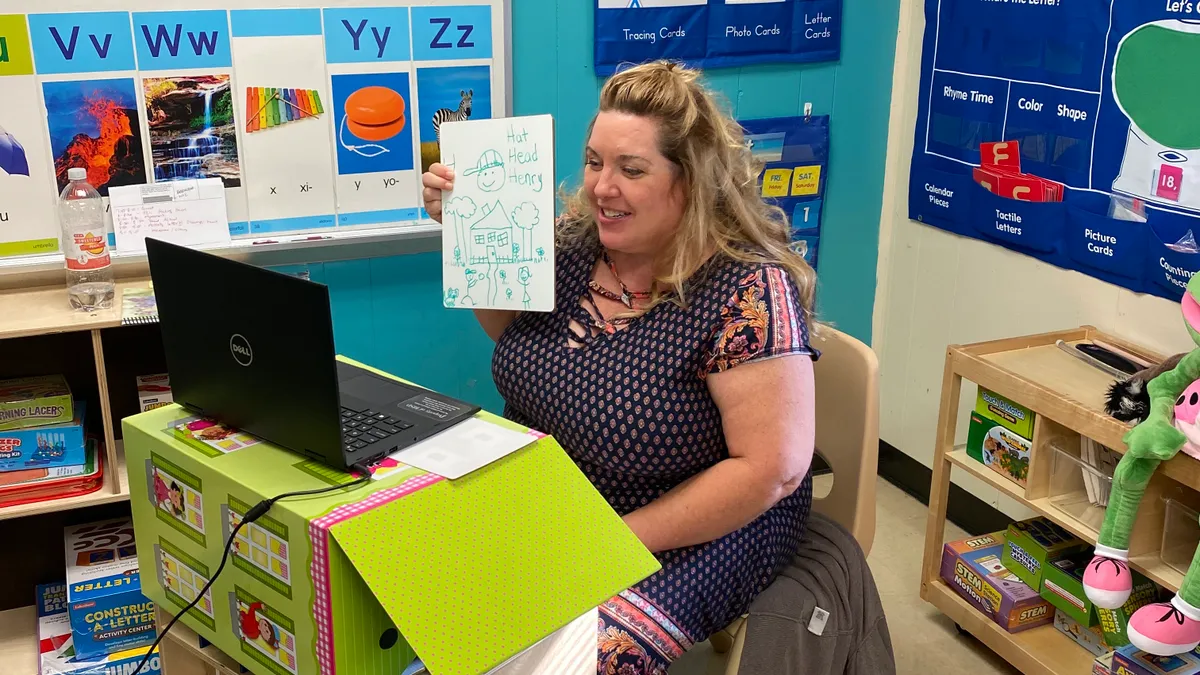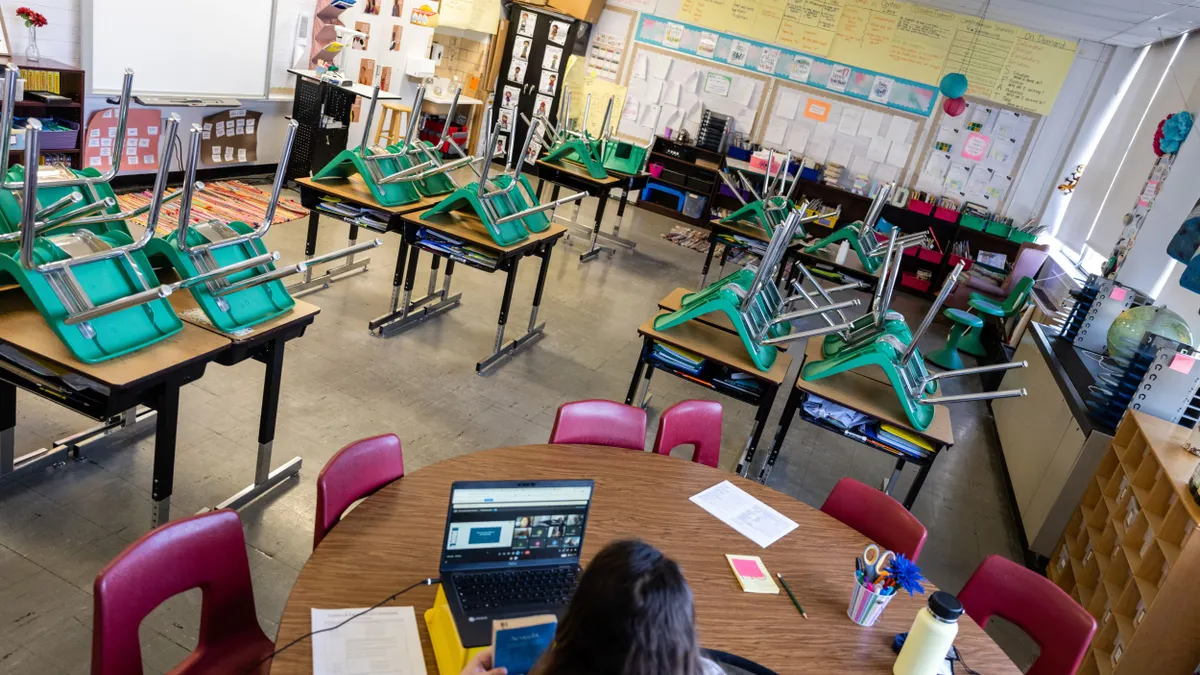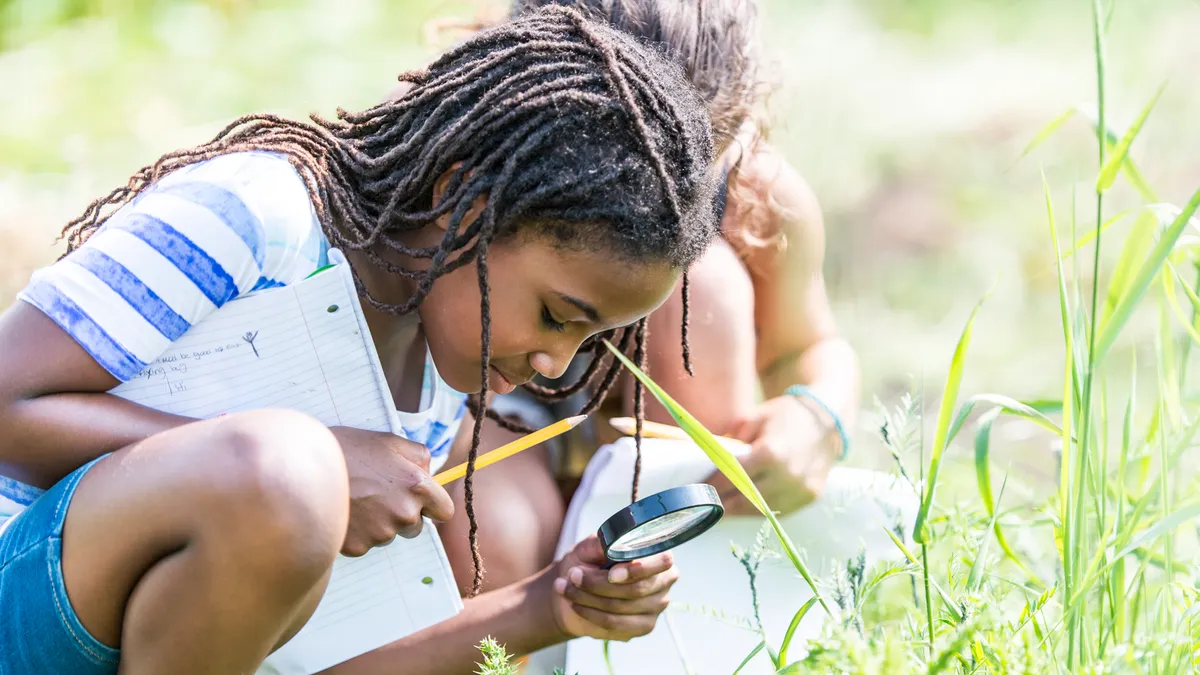The district: Bastrop Independent School District is located in central Texas. It is one of the largest districts in the state geographically at 450 square miles. More than 11,000 students attend district schools, and nearly 70% of the student population is Hispanic. Its free and reduced-price lunch participation rate is nearly 62%.
The challenge: Although Bastrop ISD made strides in providing devices and hotspots to all students who requested them and in organizing its online learning approaches since the start of the pandemic, teachers struggled with differentiating instruction and providing a robust online learning experience last spring, said Jennifer Greene-Gast, the district’s academic intervention coordinator.
Parents and students had difficulty navigating the varying approaches teachers had for posting and accepting assignments. Additionally, teachers and families did not have streamlined ways to communicate with each other, according to two teachers in the district who spoke to K-12 Dive.
Planning for the 2020-21 school year included a phased-in approach to in-person learning that allowed the district’s students to have the option of either attending school virtually or in-person. Although the mix of learning formats provided flexibility for families, district leaders anticipated it could be challenging for teachers to coordinate delivery between the formats, Greene-Gast said.
The approach: The school district took several steps to increase educators’ capacity to teach virtually and to build student and parent engagement. Starting last spring, the district held a variety of professional development sessions to build teachers’ confidence in using Google Classroom, Istation and Imagine Math for their learning portals.
The training sessions, which were recorded, were offered at beginner and advanced levels, said 5th grade science teacher Amber Bright.
“As we got a grip on [online teaching], we wanted to make it more engaging for students,” said Bright, who began making instructional videos using the new approaches she learned.
For the first 20 days of the 2020-21 school year, the district offered a coordinated launch of resources for teachers, students and families to expand understanding and participation in the blended learning models. Separate resource guides, which are updated regularly, were developed for parents, students and teachers. The parent and teacher resource guide discuss health protocols, the instructional options for students, curriculum overview and student support services.
A parent training and engagement plan was also developed to outline specific strategies for elementary, intermediate and middle, and high school levels.
The plan also called for more virtual synchronous parent training programs, especially for parents of younger students who required more at-home support from their caregivers. For example, elementary-level teachers held individual meetings with each student and family to review the online instruction schedule and how to access the online applications being used.
Finally, a call center was staffed for two weeks at the start of the 2020-21 school year, allowing staff, students and families to get individual help, Greene-Gast said.
What worked: Greene-Gast said having teachers lead both virtual and in-person classes got too complicated, so now students learning from home are instructed by teachers dedicated to virtual learners. That approach is working exceptionally well at the elementary and intermediate levels due to several factors, Greene-Gast said. For one, the district completed a full interview process for teachers interested in teaching virtually to ensure that they had the technological expertise and instructional competency to teach rigorous and engaging virtual lessons. Virtual teachers also got specific training. Additionally, time is built into the school schedule for virtual teachers to meet with parents and build upon those relationships, Greene-Gast said.
When the district began the trainings for teachers, students and parents, the process wasn’t rushed. There was time set aside for exploring and experimenting with the platforms and for celebrating small accomplishments, such as turning in the first assignment or creating an interactive lesson, Greene-Gast said.
Both Bright and Monica Roffol, a high school English teacher, said the district’s adoption of SchoolStatus, a communication tool that allows teachers and parents to communicate with each other through text, email and phone calls, was transformative. The tool can translate between English and Spanish, and it allowed teachers to easily communicate with parents without having to provide their personal phone numbers.
It also keeps logs of each outreach between parents and teachers. “I really appreciated that,” Roffol said.
The teachers also said the district’s technology specialists have been responsive in helping them find solutions for online learning challenges.
What needed improvement: The district is constantly trying to respond to the engagement feedback it receives, Greene-Gast said. For example, educators noticed student participation in synchronous lessons dropped off after lunchtime, leading the district to advise teachers to hold most synchronous lessons in the mornings, she said.
Parents and students were having difficulty tracking assignment deadlines and monitoring when teachers posted new assignments. Now, all the teachers post assignments for the week on Monday with a due date of the following Monday, Greene-Gast said.
At the middle and high school levels, some teachers still teach both in-person and virtual student simultaneously. Greene-Gast said that although teachers are managing the arrangements well, cameras are not mounted in all the classrooms so sometimes a teacher will need to walk around holding a laptop to make sure the online students can experience the lesson in the same way as in-person students. As a solution, some classes have added a teaching assistant or second teacher to help facilitate the synchronous online learning, she said.
The laptops also only hold a charge for several hours so by the end of the school day, teachers are limited in their movement because they need to stay close to desk space near a plug.
Despite the efforts to meet all students’ needs, some are behind academically or need to fulfill attendance requirements. So the district started a virtual Saturday school open to any student who wants to participate, Greene-Gast said.
As the second semester gets underway, the district held another live-streamed webinar for parents that was recorded and will be translated in Spanish. The district wants to ensure that families that have opted for virtual learning, and who may have not received the training in the fall, are aware of the learning platforms and online learning expectations. This is particularly important for secondary-level students working toward graduation credits, Greene-Gast said
The final results: While much of the measurement of the districts’ efforts has been anecdotal, Greene-Gast said 7th-grade scores on the mid-year common assessment for language arts increased from the previous school year. For example, there was an average 5.5% increase in "meets" requirements scores, and a 3.5% increase in "masters" requirements scores.
“That tells me we are closing the gap,” Greene-Gast said. “I think part of it is because we are now offering our assessments online as well as in person, including content language supports and all the accommodations that you get in a state assessment. We're actually meeting students’ needs better.”
Overall, there has been an increase in teachers’ confidence in using learning platforms and digitizing lesson plans, the teachers and academic intervention coordinator said.
Roffol said she has noticed higher engagement levels in her online classes, and some of her students earned enough credits to graduate early. The teacher trainings on adapting lessons for online learning were especially helpful, she said.
In addition, Bright said her students really crave social time with peers, so she has set aside virtual office hours for students who want to hang out, play games and show off their stuffed animals. Although online play time is not as ideal as face-to-face interactions, it has helped her connect with her students.
“Not every district could be prepared for this, so I’m glad I work for a district that reacted quickly,” Bright said. “In the end, it made my individual class and students successful.”
Correction: In a previous version of this story, the communication tool SchoolStatus was misidentified.




















